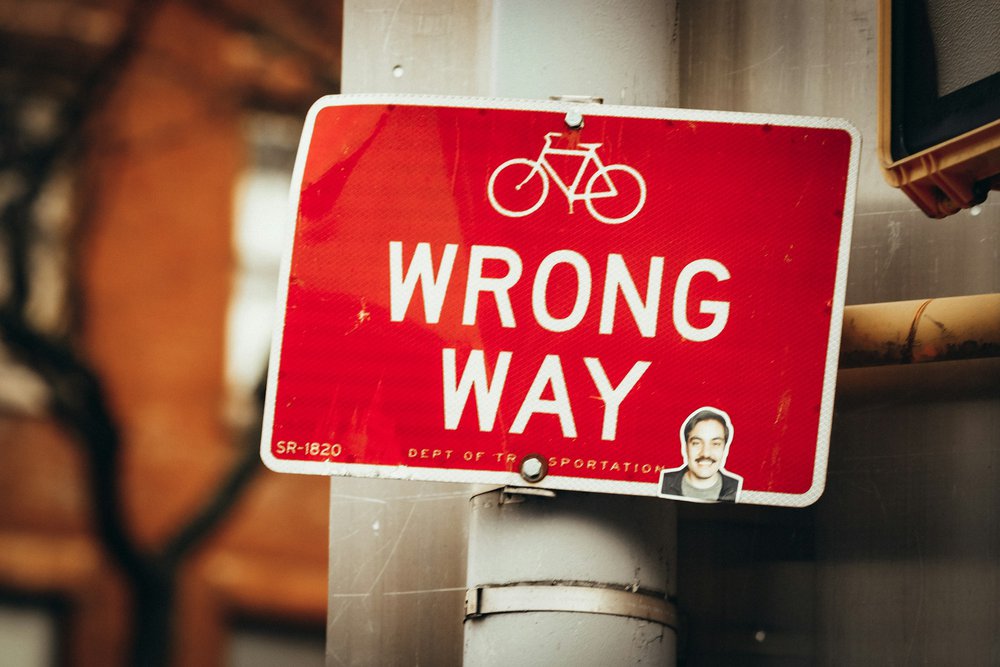You put effort into creating content, so use it wisely. Crafting original content with carefully chosen words adds value and authority to your digital presence. Success on social media comes from strategic posting, not frequency. Understanding your content’s “post life” helps plan effective marketing. The term content originates from Anglo-French and Medieval Latin, meaning the substance or meaning of a message. It refers to the substance and state of satisfaction, often called 'content noun'. Posts contain much content on a subject, providing depth and meaning like a work of art. A post’s lifespan is how long it engages audiences before fading. Focusing on quality over quantity and knowing each platform’s lifespan maximizes your ROI. Content strategies have evolved to adapt to changing platforms and audience expectations.
Introduction to Content Strategy

A killer content strategy is crucial for standing out in today’s crowded digital world. Whether you’re running a business or building a personal brand, understanding your audience and tailoring your content to each platform’s unique strengths is key. Focus on quality, relevance, and consistency to boost engagement, drive traffic, and extend your content’s post life.
Key points:
- Tailor content for each social media platform to maximize impact.
- Understand audience preferences for different content types.
- Prioritize quality over quantity in your posts.
- Use platform-specific features to enhance engagement.
- Consistently deliver relevant and valuable content.
- Monitor performance and refine your strategy regularly.
Understanding Post Life: Why It Matters

Maximizing your post’s lifespan is critical for boosting engagement and ensuring your message reaches the right audience. Each social media platform has its own peak relevance window—for example, an Instagram post performs best for about 48 hours, while LinkedIn content can engage audiences up to 72 hours. Knowing these differences helps you create content that grabs attention and sustains it, contributing effectively to your marketing goals.
Post lifespan depends on platform algorithms and audience interaction. Optimizing your strategy for each platform helps your posts garner engagement and extend their lifespan, essential for building lasting relationships and maximizing ROI.
Digital Post Lifetime: Platform-by-Platform Breakdown
Each platform has distinct characteristics affecting your content’s shelf life. Here’s a concise overview based on research from Hootsuite, Moz, and Sprout Social:
- TikTok: 0–2 minutes — Posts decay rapidly but can go viral weeks or months later via the “For You” page.
- Twitter: 15–18 minutes — The fast-moving feed buries tweets quickly; frequent posting and retweeting are essential.
- Facebook: 5–6 hours — Most engagement happens early, but posts in groups or pages with high interaction can last longer.
- LinkedIn: 24–72 hours — Professional engagement and an algorithm favoring meaningful content extend lifespan.
- Instagram: 48 hours — Engagement peaks early; Reels can extend lifespan to two weeks or more.
- YouTube: 20 days to 2 years — As a search engine, YouTube videos can remain relevant for a very long time.
- Pinterest: 3–4 months — Pins can be rediscovered and re-pinned, significantly extending their lifespan.
- Blogs: Up to 2 years — Evergreen content on blogs offers the longest post life and highest ROI.
Keep Your Content Alive and Relevant

Your post’s lifespan depends heavily on platform algorithms and audience engagement. To boost longevity, encourage your audience to interact through likes, comments, shares, saves, and pins. Meaningful discussions and high-quality interactions significantly extend relevance.
Posting consistently is important, but ensuring your message resonates and engages your audience is even more critical. A satisfied and engaged audience is more likely to return and interact with future posts.
Platform-Specific Tips to Extend Post Life
TikTok:
- Repurpose videos on other platforms to extend reach.
- Post quality content 1–3 times daily.
- Best times to post: Tuesdays 2 a.m.–9 a.m., Thursdays 9 a.m.–7 p.m.
Twitter:
- Tweet at least twice daily; up to 6–8 times if possible.
- Avoid Sundays.
- Post between 8 a.m. and 9 a.m. for optimal engagement.
Facebook:
- Post varied content up to four times daily.
- Share links to extend lifespan.
- Pin important posts to the top of your feed.
- Best posting times: Weekdays 8 a.m.–noon.
LinkedIn:
- Engage actively with your network to boost lifespan.
- Use LinkedIn Pulse to republish blog posts.
- Post early in the workday, especially Tuesday through Thursday.
Instagram:
- Post native video Reels for longer reach.
- Use popular, relevant hashtags.
- Best times: Weekdays 10 a.m.–2 p.m.
YouTube:
- Post longer videos on YouTube.
- Repurpose clips on other platforms with links back.
- Upload early; post weekday afternoons and weekend mornings.
Pinterest:
- Pin up to 10 times daily, especially Sunday to Tuesday.
- Include informative descriptions and click-through links.
- Boost pins with evergreen videos for longer exposure.
Blogs:
- Develop a consistent blogging schedule and explore topics in depth to maximize post life and audience engagement.
- Include infographics and videos for shareability.
- Update regularly to maintain relevance.
- Post 2–4 times per week consistently.
Optimizing Content Length for Maximum Impact

Getting your content length right is essential for longevity. Longer, in-depth content performs well on LinkedIn and Facebook, where audiences seek meaningful insights. Choosing the right number of words ensures your content is comprehensive and engaging, enhancing both visibility and user interaction.
Twitter demands brevity and sharp messaging. Blogs allow deep dives that improve SEO and keep readers engaged longer.
Using tools like content calendars and analytics helps you find the ideal length for each platform and audience. Adding historical context, such as references to Medieval Latin contentum and Latin contentus, adds depth and credibility to your writing.
Content Promotion and Visibility
Even the best content needs promotion to avoid collecting digital dust. To make your content truly effective, focus on crisp visuals, engaging captions, and hashtags that help new audiences discover your posts. Tagging the right accounts and collaborating with influencers or complementary brands can significantly boost your reach.
Remember, every like, comment, and share helps extend your content’s reach and drives real traffic and leads. Consistency across platforms is key to maximizing engagement and results.
Key tips:
- Use eye-catching visuals and compelling captions.
- Employ strategic hashtags to reach new audiences.
- Tag relevant accounts and partner with influencers.
- Encourage audience interaction to extend post lifespan.
- Maintain consistent posting across platforms to build momentum.
Measuring Post Success: Key Metrics to Track

Tracking meaningful metrics helps you understand your content’s impact:
- Engagement rate (likes, comments, shares)
- Reach and impressions
- Audience interaction quality
Analytics tools provide insights across platforms, highlighting what resonates and what needs adjustment. For example, a highly commented Instagram post signals strong interest, while low engagement on Twitter may call for a strategy shift. Regular analysis allows you to refine your approach and consistently create high-engagement content.
Repurposing and Updating Posts for Extended Life
Repurposing content maximizes value and extends post life. Instead of always creating new material, breathe fresh life into existing posts by:
- Sharing across different platforms
- Updating with new information
- Transforming blog posts into videos, carousels, or articles
Keeping posts current satisfies both your audience and search engines, boosting visibility and maintaining relevance over time.
More Ways to Improve Post Life
- Create Evergreen Content: Focus on topics that remain relevant long-term, updating them regularly to keep them fresh and engaging. This helps maintain search engine rankings and audience interest.
- Use More Video Content: Video drives more engagement than other formats, with tweets containing video receiving up to 10x more interaction. Leveraging video across platforms maximizes content lifespan.
- Encourage Sharability and Engagement: The more your audience interacts (likes, comments, shares), the longer your post stays visible. Shares can restart the engagement clock entirely.
- Avoid Over-Posting: Focus on a few platforms and adjust posting frequency based on audience response. Quality over quantity wins.
Avoiding Common Mistakes in Content Creation

Creating content that truly resonates requires attention to detail and understanding what works. Key mistakes include overlooking SEO optimization, failing to tailor content to your target audience, and neglecting promotion on social media platforms.
To create high-quality, engaging content that drives meaningful results, keep these points in mind:
- Optimize with the right keywords, meta descriptions, and images for better search visibility.
- Tailor content specifically to your actual target audience to boost engagement.
- Actively promote your content across relevant social media platforms.
- Focus on quality and relevance to attract meaningful attention and impact.
- Avoid generic, irrelevant content that wastes opportunities.
Refining Your Content Strategy

A killer content strategy evolves with your audience and the digital landscape. Stay on top of your website analytics and engagement metrics—comments, likes, shares—to figure out which content types hit the mark. Use those insights to refine your approach, doubling down on the topics, formats, and platforms that perform best.
Improving quality and relevance isn’t a one-time project—it’s ongoing. Stay plugged into the latest trends and best practices to keep your strategy fresh and competitive. By continuously evaluating and tweaking your content, you’ll ensure it stays engaging, relevant, and effective at driving your goals—whether building brand awareness, increasing website traffic, or fostering a loyal audience.
Frequently Asked Questions (FAQs)
What platform has the longest post lifespan?
Blog posts typically have the longest lifespan, often remaining relevant for up to 2 years. Pinterest pins also enjoy long lifespans of around 4 months or more if optimized well. YouTube videos can maintain engagement for 20 days to 2 years due to their search engine-like nature. For more insights, check out Levitate Media’s guide on content lifespan.
What is the lifespan of a LinkedIn post?
LinkedIn posts generally last about 24 hours but can remain relevant for up to 72 hours or more with active engagement like comments and shares, making it a strong platform for B2B content. Learn more at Levitate Media.
What is the lifespan of content?
Content lifespan varies widely by platform and type. Instagram posts last about 48 hours, Twitter posts about 15–18 minutes, while blogs and YouTube videos can last months or years. Understanding this helps plan effective marketing strategies.









